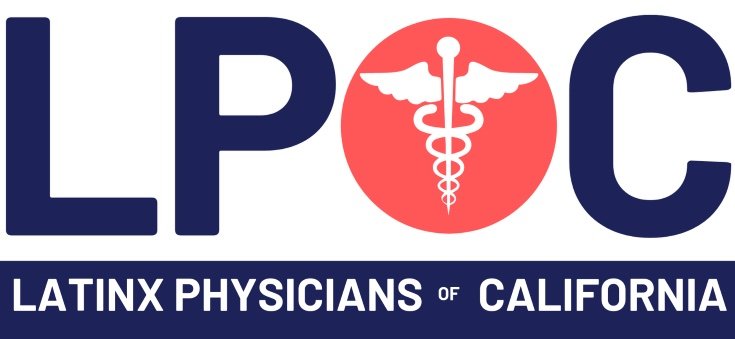Dr. Felix Nunez: Tri-County MediCal Administrators Alarmed by Possible Cuts
Read the original story at the Pacific Coast Business Times website.
Gold Coast Health Plan and CenCal Health, administrators of Medi-Cal in the tri-county region, are sounding the alarm about possible funding cuts to Medicaid by the Republican-controlled Congress.
Medicaid is known in California as Medi-Cal, the health insurance program for low-income people. It’s the largest Medicaid program in the country, serving about 15 million people statewide, about 40% of the state’s population. Medi-Cal is funded by both the state and the federal government, each paying about 50%.
Central Coast administrators said the federal funding is critical — that the program can’t survive at current levels with state funding alone.
“Everyone is anticipating that there will be some cuts, though we don’t know to what extent,” Dr. Felix Nuñez, acting CEO of Gold Coast Health Plan, told the Business Times Feb. 27. Gold Coast is the Medi-Cal Health Plan for Ventura County.
“The big concern that we have here is anything that will impact the Medicaid population in terms of funding for care will impact the entire healthcare infrastructure here in Ventura County,” Nuñez said.
Marina Owen, CEO of CenCal Health, the Medi-Cal Health Plan for Santa Barbara and San Luis Obispo counties, voiced similar worries.
“The concern is that any potential cuts to Medicaid for a program that’s already underfunded would disrupt access to care in our community,” she told the Business Times March 3. Another regional Medi-Cal participant is Kaiser Permanente, which offers the program in a number of California counties, including Ventura County.
Medicaid/Medi-Cal is separate from Medicare, which provides federal health insurance for individuals 65 and older.
The Republican-controlled House of Representatives adopted a budget resolution on Feb. 25 directing the Energy and Commerce Committee, which oversees Medicaid, to find at least $880 billion in mandatory spending cuts over the next decade.
The resolution doesn’t cite Medicaid, but the program would almost certainly face deep cuts. That’s because it’s one of the largest sources of federal funding, about $600 billion annually.
The Senate has adopted its own, narrower budget bill. Both chambers must now reconcile and come up with a single budget. President Donald Trump has endorsed the House’s budget proposal.
Gold Coast administers Medi-Cal for nearly 250,000 low-income residents of Ventura County through its network of primary care physicians, specialists, behavioral health providers and hospitals. Its members include one in three county residents, one in six seniors, and one in two children up to the age of five.
“It’s a lifeline for them,” said Nuñez. He said funding cuts to the program would strip resources from the people who need them most. “It would force people to avoid and delay care, resulting in more advanced, costlier conditions.”
“It would also push more patients into emergency rooms where unpaid care will further burden an already strained system,” he said.
Hospital-based systems, which are already working on thin profit margins, rely on Medicaid funds, he said.
Any cuts “could make it very difficult for them to continue to provide care at the same level and at the same scale,” Nuñez said.
CenCal Health administers Medi-Cal for about 240,00 residents of Santa Barbara and San Luis Obispo counties, including 85,000 children, partnering with more than 5,000 physicians, hospitals,and other providers.
It covers one in three Santa Barbara County residents as their primary insurance and one in four residents in San Luis Obispo County, Owen said.
“Medi-Cal provides essential health coverage to families and individuals with low incomes, including many working people who do not have access to employer-sponsored health insurance,” she said.
“It keeps families with children, pregnant women, and seniors from worrying about how they’ll pay for the medical care they need,” Owen said.
Medi-Cal also ensures a healthy workforce and healthy school-aged children for generations to come, she said.
And it’s a job creator, supporting vital roles at area hospitals and health centers, Owen said. Without Medi-Cal, for instance, many low-income people won’t have health insurance, she said. As a result, there will be less of a need for physicians and other health care providers such as physician assistants and nurses, she said.
Nuñez concurred. “Without Medi-Cal, many would face significant barriers to basic care like doctor visits, preventive screenings, and life-saving treatments and medications,” he said.
He noted that nearly half of U.S. adults struggle with health care costs, and one in four face medical debt — one of the leading causes of bankruptcy. Nuñez and Owen are concerned that as a cost-saving measure, Congress may impose a requirement that all able-bodied people be employed to qualify for Medicaid/Medi-Cal, thus reducing eligibility.
Exemptions would be children, pregnant women, the elderly, and those with disabilities, they said. Work requirements are currently left up to the states. California doesn’t have one. But what’s being considered by Congress is to mandate work requirements for all states.
“That’s how they would get to the savings,” Nuñez said. “It would decrease the number of people being covered.” Owen said requiring employment translates into “taking certain populations and saying they don’t ‘deserve’ Medicaid help.”
But a work requirement would largely be a misnomer, she said.
“Over 85% of those on this program already work and those that don’t work are full-time caregivers or they have a disability or they’re parents who take care of small children,” Owen said.
Nuñez agreed, saying it’s important to counter the stereotype that Medicaid/Medi-Cal recipients are people who aren’t working. “They’re the working poor,” he said.
